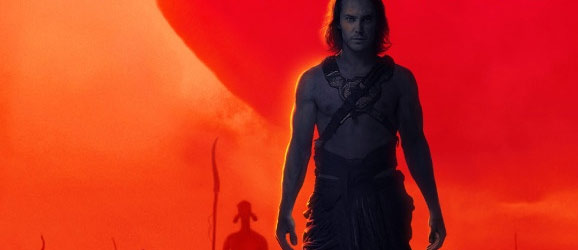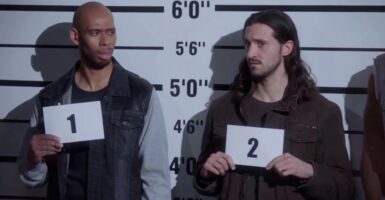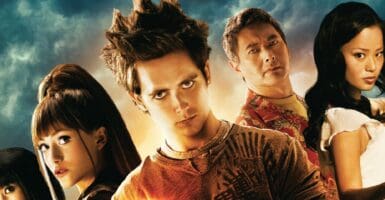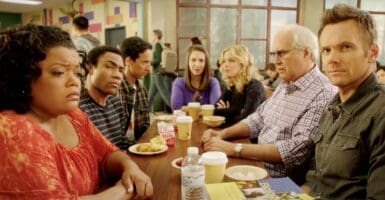5 Reasons Disney’s John Carter Failed At The Box Office
We know where it all went wrong.
This article is more than 2 years old

This weekend Disney debuted their adaptation of author Edgar Rice Burroughs’ classic series of sci-fi novels, titled for their purposes as John Carter. It’s a special effects bonanza and as a result, one of the most expensive to make movies of the year. They spent more than $250 million dollars bringing the world of Barsoom to life and, unfortunately, no one showed up to see it. John Carter only took in a meager $30 million its opening weekend, not even enough to earn it first place on the box office charts. It was beaten instead by the two-week old Seuss’ adaptation The Lorax.
For the record, I liked this movie; but it’s not hard to figure out what went wrong. John Carter has been a marketing disaster since the beginning. The trailers never really captured anyone and the premise never made a lot of sense to audiences. Worse critical response to the film was, to put it gently, pretty mediocre. But to dismiss John Carter’s failure that way is, perhaps painting with too broad a brush. Why was the marketing such a disaster? Why didn’t critics like it more? Here’s the answer to those questions, broken down into five, very simple bullet points.
John Carter Is A Terrible Movie Title
John Carter was doomed to failure almost from the moment they started putting the words John Carter on the movie’s posters. Originally Disney was going to go with the far superior and more descriptive title John Carter of Mars, but they dropped “of Mars” early in the production process and just went with the name of the film’s main character. If you’ve seen the movie you know that actually pays off in the story and that dropping “of Mars” turns out to be kind of an important part of the plot. But it’s not such a good decision if you’re looking to get ticket buyers interested. A lot of people had no idea who or what John Carter was, but as a movie title it sounds kind of boring. It didn’t help sell the picture or get anyone who wasn’t already aware of what Burroughs books were about, interested. Instead it turned those people off.
Disney Ignored John Carter’s Pedigree
John Carter is based on a classic series of books by a literary master, but you’d never know it from the movie’s marketing. Disney made almost no mention of the story’s origins and didn’t really play up the fact that it’s based on a classic at all. That could be because they’ve toned down Burroughs work considerably, in an effort to make it family friendly (more on that in a minute) and simply didn’t want people to read the original stuff and realize that, hey, this wasn’t really intended for kids. But that doesn’t really explain why they ignored the rest of their film’s pedigree. John Carter was not only based on the work of a literary master, it was made by a modern-day masterpiece director. John Carter is the first ever live action film from Andrew Stanton whose previous two films, WALL-E and Finding Nemo, were both Oscar winners and instant classics. Yet Disney made very little of the achievements of the team who put John Carter together. It seems like the kind of thing that, especially since they clearly wanted John Carter marketed as a family movie, you’d have on every single movie poster.
This Story Isn’t Family Friendly
Should you read the books Edgar Rice Burroughs wrote about John Carter, back in 1912, what you’ll find is something very different from the movie Disney made out of it. Burroughs’ books are decidedly rated-R. Violent and sort of sexy (at least for the time), they’re more like a sci-fi version of Conan the Barbarian than something you’d expect from the top director at Pixar. All you really need to know is that most of the time in the books, everyone is completely naked. But Disney doesn’t make those kinds of movies so they tried to fit it into their family-friendly format. In context of what ended up on screen it works, mostly, but the trailers feel confusing in part because the tone they’ve chosen doesn’t exactly fit the story, and in larger part because they get lost in trying to explain what kind of story this is. They never should have tried to change it into something it wasn’t really supposed to be. Burroughs’ stories are simple and in the process of modifying them those stories become something that isn’t simple, not at all. It’s telling that most of those who did show up to see it were, according to studio reports, over the age of 25. Making a movie you can take your kids to was never the right move with John Carter. Even in this watered down Disneyfied format, families and kids simply are not the audience for this story.
Women Are From Mars
Since Disney wasn’t going to make these the gritty, rated-R movie the books’ author might have wanted them to be, they could have played up the other strengths of their script while advertising. What you wouldn’t know just from watching the trailers is that John Carter is kind of romantic. Part of the reason Avatar was such a huge success is that it appealed to women as much or more than it appealed to men. That movie’s trailers weren’t shy about playing up the romance angle, crafting Cameron’s film as a tale of forbidden love. John Carter’s trailers act as though the film was constructed primarily to create pictures which might look good on a little boy’s lunchbox. There’s very little romance in them and worse, very little of the film’s strong, take charge female character Dejah Thoris. Dejah Thoris is a warrior scientist, and arguably the movie’s most important character. She’s the kind of strong woman every parent wants their daughter to turn into. That’s not in the trailer. If she was shown at all in the trailer, it was only to ask John Carter for help and then stand behind him while he defended her. Young girls should probably look up to a character like Dejah Thoris, but from the movie’s marketing, those girls probably didn’t even realize she was an important part of the movie’s story.
Barsoom Looks Like Utah
John Carter opens with a retooled version of the Disney logo, bathed in red to honor the movie’s Martian location. That logo is the last even remotely alien looking setting you’ll see in the film, since mostly it’s set in a barren dessert which could just as easily have been in Utah (and since that’s where they shot it, actually was). That’s a problem because when you look at the trailers and indeed to some extent while you’re watching the movie, it’s hard to really feel the sense of wonder the film is trying to convey. That problem carries over to the alien species John Carter encounters too. The Tharks look completely alien and as a result they are, without a doubt, the best part of the movie. But Dejah Thoris and her people whom Edgar Rice Burroughs described as the “red” people of Mars, mostly just look like humans who put on a bunch of spray tan and then all went out to get bad tattoos. No matter how Disney marketed it, seen in small snippets, it all ends up looking far too familiar. Maybe that’s why the Disney marketing team shied away from putting the very humdrum human looking Dejah Thoris front and center and instead insisted on wasting almost all of their marketing on showing off the contextually minor battle between John Carter and the giant, Barsoomian white apes. But a movie set on an alien planet should look and feel different. It should feel exciting, like something new you have to go see. Like someplace you want to be and explore. The world of John Carter, for all its charms, never does that.
It’s easy to understand why no one showed up to see John Carter this weekend. This just isn’t that kind of movie. Maybe it’s possible to tell this story in a way that might actually get people to see it, but Disney’s team never found it. That doesn’t mean, however, that John Carter isn’t worth your time. For all its flaws Andrew Stanton’s film is a lot of fun and Willem Dafoe’s work as Tars Tarkas, is worth the cost of admission alone. See it, enjoy it, and hope that maybe some day someone else will tell Edgar Rice Burroughs’ epic story in a way that resonates.












